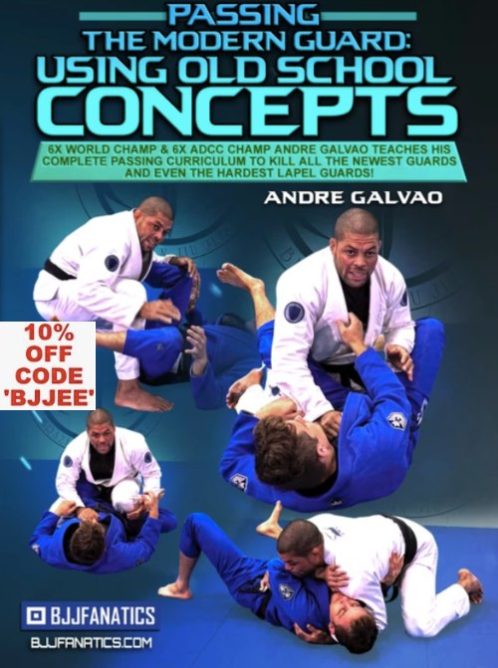As I mentioned earlier, passing from the open guard is definitely ideal. Although open guard is preferable, it’s not going to be the case every time you grapple against a larger opponent. Sometimes you will have to deal with getting stuck in locked or immobile positions such as half guard, closed guard, and other variations. It’s not the greatest situation, but it’s not end of the world either. We have to remember the concepts that we used in our passes from the open guard.
The Closed Guard
The closed guard is probably the least preferable spot to pass from against a larger and stronger opponent. You do not have any movement potential, your mobility is non-existent, and you are at risk for submissions. So, the first thing you must do if you end up in the closed guard of a much larger opponent is get the heck out. I know, it sounds so silly it’s almost stupid, but it’s conceptually one of the most important things you can do. The only things that could possibly happen from there are you getting trapped in a submission or you getting swept from there. The bottom line is, you have to get out of there.
Once you have broken their closed guard and opened it up, you have to make sure that they cannot close it back up on you. This is usually done by stepping the front leg up and using the knee as a barrier. While doing this, you can also back up a little bit in order to give yourself some space to move. From here, we can go into our leg drag pass as well as our knee cut pass.
The most important thing to remember when fighting from the closed guard against a bigger opponent is to get out of there as soon as possible. Nothing good can come from it, so we must be able to open up the opponent’s guard and quickly initiate a pass from there.
The Half Guard
If we take a look at passing from the half guard, we cannot forget how important having the underhook is. If my opponent is twice my size and they are able to get a deep underhook on me, I am in deep trouble. Most of the time, they will be able to build to their base and drive me right over for the sweep. I cannot afford to let this happen, therefore I must always be fighting for the far-side underhook. Once I have established my far-side underhook, I can now look to pass the half guard.
Going for a half guard pass that involves squeezing the upper body with shoulder pressure and underhook control while trying to free the trapped leg can sometimes be risky. This is because when I have both of my arms squeezing inward and towards the middle, I might not be able to use my hands to post if my opponent decides they want to out-muscle and roll me over. I will always make sure that I have the far-side underhook, but I will also make sure that I am not committing my arms to a spot where I might not be able to use them to post and keep my position if needed.
If I do get stuck in a half guard my best option from there is to use my knee cut pass. Using the knee cut pass from the half guard is great because if done correctly, will not allow your opponent to turn up and into you.
The knee cut pass and the leg drag pass are the two passes that I have personally had the most success with in my experience. They allow you to move fast, avoid entanglements, and allow easy access to the back mount. Drill these guard passes from these different positions and your guard passes against bigger opponents will improve dramatically.
Never Worry About The Lapel, Berimbolo, Or Inverted Guard Again With This Blueprint For Passing Modern Guards.
- Andre Galvao Teaches The Passing Principles Anyone Can Use To Shut Down The Modern Guard Player – The Same Moves He Teaches His Atos Fighters.
- Master the modern guards and pass with pressure and mobility, with this new 8-volume mega release from Andre Galvao.
- Get 10% Off with code ‘BJJEE’.
The post Breaking and Passing Guard on a Bigger and Stronger Opponent with Andre Galvao appeared first on Bjj Eastern Europe.

